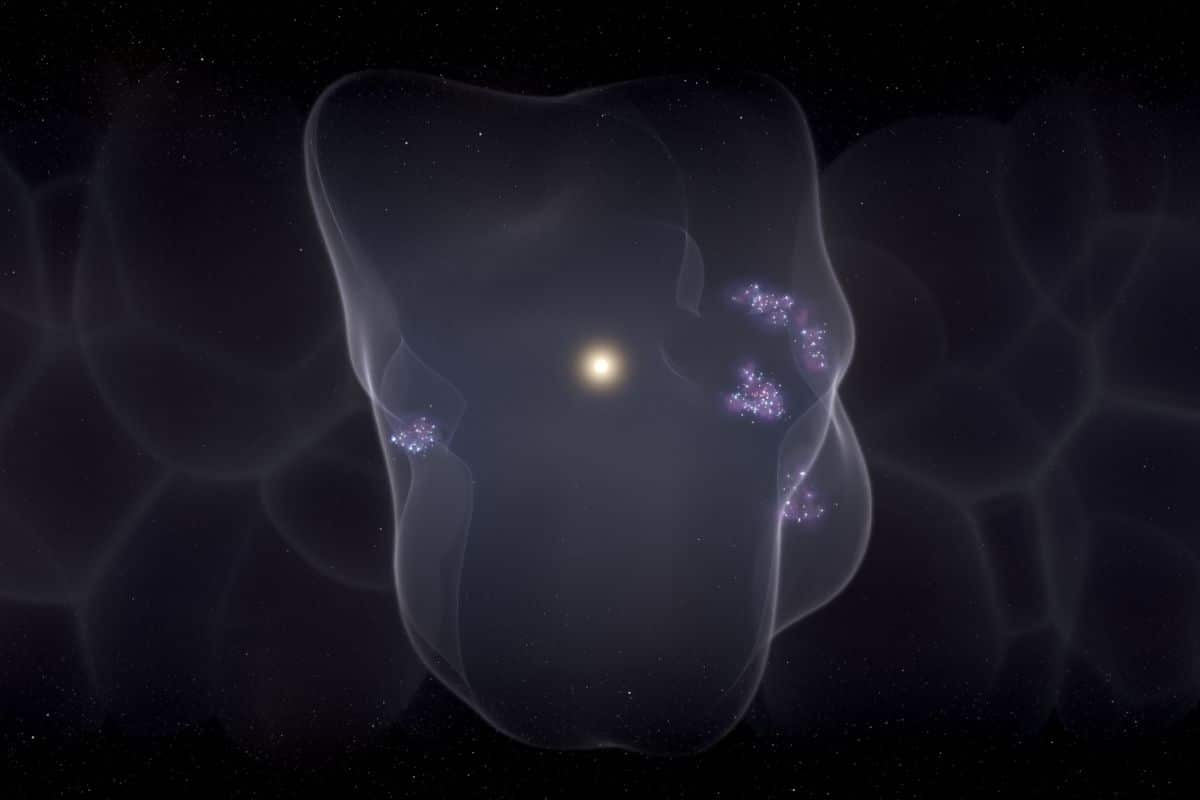

And now researchers have unraveled how that bubble and the young stars that surround us came to be.
Our solar system is located in the so-called ‘Local Bubble’; a 1,000 light-year wide “bubble” made up of hot, nearly empty space. Remarkably, we are surrounded by thousands of young stars, which have clung to the surface of the giant bubble. A pressing question, however, is how exactly the Local Bell, as well as the young stars around us, came into being. Moreover, we are also located right in the heart of the Local Bell. How’s that all going? A new study sheds light.
Local call
In the study, astronomers delved into the evolutionary history of our galactic backyard. The Earth is in the heart of a gigantic star-giving bubble. But we don’t know much about this yet. While astronomers have known about the existence of the young stars for decades, the birth of the Local Bubble and its impact on the surrounding gas was a mystery until recently. “This is really an origin story,” said researcher Catherine Zucker. “For the first time, we can explain how all nearby star formation began.”
Supernova Explosions
It is generally believed that our Local bell – but also other cavities; we’re not alone – the result of supernova explosions. Huge explosions from massive stars would, millions of years ago, have made the surrounding space even emptier than it already was. The researchers find in the new study that a series of supernovae that occurred 14 million years ago pushed out interstellar gas. And this created the great ‘bubble’ around us. “We calculated that there were about 15 supernovae over millions of years that eventually formed the Local Bubble as we see it today,” Zucker said.
Growing
However, the oddly shaped bell does not sleep. It grows slowly and steadily, the astronomers note. “It’s expanding at about 4 miles per second,” Zucker said. “However, he has lost most of his strength and now remains pretty much stable in terms of speed.”

Artist’s impression of the Local Bubble, with star formation on the surface. Scientists have now shown how a series of events that took place 14 million years ago led to the formation of the huge bubble, which is responsible for the formation of all young stars within 500 light-years of the sun and Earth. Image: Leah Hustak
Today, there are seven known star-forming regions or molecular clouds – regions of space where stars appear – on the surface of the Local Bubble. In fact, all the young stars and star-forming regions – within 500 light-years of Earth – are located here. This is no coincidence, by the way. The supernova explosions that formed the Local Bubble simultaneously create a surface that is ideal for star formation.
To explain the research a little more simply; think of a large hole cheese. The holes in the cheese were created by supernova explosions. New stars then form in the cheese around the holes left by the dying stars.
Interestingly enough, the Earth is right in the heart of the Local Bell. Incidentally, we should not look for more than simply coincidence. “When the first stars exploded in supernovae, our sun was still a long way from all the action,” said researcher João Alves. “About five million years ago, the path of the sun crossed the bell. And now our sun is – just coincidentally – almost exactly at the heart of the Local Bell.”
Knowing that super bubbles like the Local Bubble are not a rarity, the researchers plan to map more interstellar bubbles. In this way they want to get a complete picture of their locations and all shapes and sizes in which they occur. By studying such superbubbles and their relationship to each other, astronomers hope to eventually understand the role dying stars play in “giving birth” to new stars. Researchers also want to gain a better picture of the structure and evolution of galaxies such as our own Milky Way.
Source material:
“1,000-light-year wide bubble surrounding Earth is source of all nearby, young stars– Harvard-Smithsonian Center for Astrophysics (via EurekAlert)
Image at the top of this article: Leah Hustak (STScI)